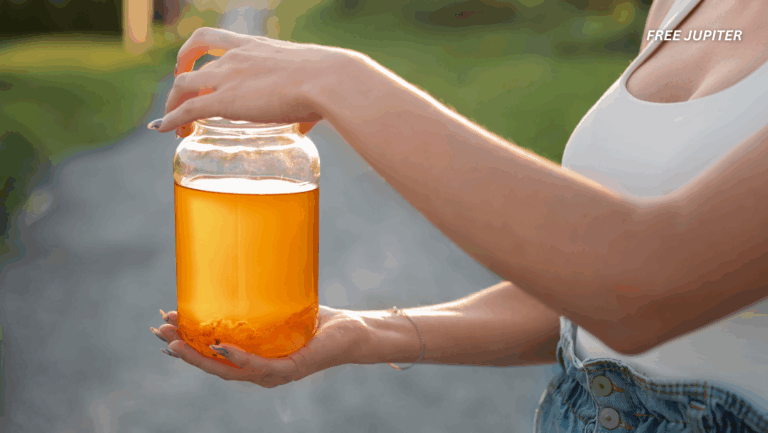Disclaimer: The information in this article is for general informational purposes only and is not medical advice. We are not doctors, and this website is run as a family hobby project. Always consult a qualified healthcare professional before making decisions about your health. Please fact-check any claims and use this content as a starting point, not a substitute for professional guidance.
Imagine if treating depression didn’t always mean sitting across from a therapist or taking a daily pill. What if it could also mean moving your body to your favorite music, letting loose in your living room, or even signing up for a dance class just for fun?
Well, science says: that might actually be one of the best things you can do.
According to a massive review by researchers in Australia, dancing may be more effective than medication or talk therapy when it comes to lifting symptoms of depression. Yes—more than jogging, more than yoga, and even more than some common forms of treatment like antidepressants or cognitive behavioral therapy (CBT).
A Study That Put Depression on the Dance Floor
Researchers from Australia took on a huge task: they analyzed 218 studies involving over 14,000 people to figure out what kind of physical activity worked best for treating depression.
They looked at everything—walking, running, strength training, yoga, tai chi, even standard treatments like antidepressants and therapy sessions.
And guess what came out on top?
Dancing.
Of all the methods studied, dance consistently delivered the biggest drop in depressive symptoms. This wasn’t a one-off finding—it showed up across different age groups, genders, and countries. From teenagers to retirees, people who danced regularly were more likely to feel better mentally and emotionally.
Read more: Study Finds 1 in 3 People May Have ‘Misokinesia’
Why Dancing Might Be a Mental Health Superpower
At first glance, it might seem odd that dancing would beat out other forms of exercise. Isn’t running harder? Isn’t lifting weights more intense?
Sure—but when it comes to mental health, it turns out the magic is in the mix of elements that dancing brings together:
1. It’s More Than Just Movement
Dancing doesn’t just move the body. It stirs the emotions. It involves rhythm, coordination, memory, music, creativity, and expression—all at once. This multi-sensory experience lights up various parts of the brain that are involved in mood regulation, memory, and emotional processing.
2. It Boosts Feel-Good Chemicals
When we dance, our brains release dopamine, serotonin, and endorphins—the same chemicals that many antidepressants aim to regulate. But in this case, your body does it naturally. No prescription needed.
3. It Interrupts the Thought Loop
Depression often traps people in a repetitive cycle of negative thinking. Dancing pulls focus into the body and the present moment. It serves as a kind of “moving mindfulness,” similar to meditation but with more rhythm and groove.
4. It’s a Built-In Confidence Booster
Mastering even a simple dance step can give people a sense of accomplishment. Over time, dance helps individuals feel more in control of their bodies and their emotions—something that depression tends to erode.
5. It Encourages Social Connection
Group dance classes, community events, or just dancing with a friend in your kitchen—all create moments of shared joy. Human connection is a powerful antidote to loneliness, which often walks hand-in-hand with depression.
Read more: Study Finds People With ADHD Listen to Music Differently—Here’s How
Dance as Somatic Therapy: Moving Through Emotion
This isn’t just about exercise—dancing also fits into a field known as somatic therapy, which is all about using the body to process emotion and trauma.
Unlike traditional therapy, where you talk your way through your struggles, somatic approaches encourage you to feel and move your way through them. That’s where dance comes in. It allows people to express anger, sadness, joy, or even confusion—all without saying a word.
Many people describe dancing as a form of emotional release—a way to “shake off” heaviness they didn’t even realize they were carrying.
Real-World Stories: Dance Making a Difference
This isn’t just theory. Around the world, people are already using dance to heal.
In Sweden, a study involving teenage girls dealing with anxiety and depression showed that those who took dance classes twice a week for eight months experienced significant improvements in mood and self-esteem—even months after the classes ended.
In Argentina, tango is being used as a therapy for people with Parkinson’s disease, combining emotional uplift with physical benefits like improved balance and posture.
In the U.S., community centers offer dance therapy sessions for trauma survivors, veterans, and people living with chronic mental illness.
And of course, there’s the everyday magic of dancing when no one’s watching—something many people instinctively do to cheer themselves up.
Dance vs. Traditional Depression Treatments
Now, let’s be clear: this doesn’t mean dancing should replace therapy or medication for everyone.
Antidepressants and counseling are often life-saving, and they remain crucial tools for many people. But the research suggests that dance can be just as effective—or even more so—for certain individuals, especially when added to other treatments.
Unlike medication, dance comes with very few side effects (unless you count sore feet from dancing too hard). It’s accessible, relatively low-cost, and can be done anywhere—from your bedroom to your backyard to a dance studio.
You Don’t Need to Be a Dancer to Dance
If you’re thinking, “But I have two left feet,” or “I’m too shy to dance,”—you’re not alone. The beauty of this approach is that you don’t have to be good at it. You just have to move.
There’s no choreography required. You can freestyle, sway to slow music, or simply let your body bounce to whatever beat feels good. You don’t even have to leave your house.
And no, you don’t need fancy clothes or mirrors. All you need is music you enjoy and a willingness to let go for a little while.
How to Add More Dance to Your Life (and Boost Your Mood)
Want to give it a try? Here are a few simple ways to add dance into your routine—no stage lights necessary:
- Start with 5 Minutes a Day: Put on your favorite song and dance while brushing your teeth, folding laundry, or during a work break.
- Take a Dance Class: Try a local class or follow an online video. From hip-hop to ballroom, there’s something for everyone.
- Have a Solo Dance Party: Close the door, blast your playlist, and dance like no one’s watching—because no one is.
- Dance with a Friend or Partner: Movement is more fun with company. Grab someone and make it playful.
- Use It as a Mood Shift Tool: Next time you feel stuck in your head, hit play and move your body for a mental reset.
Read more: Want to Wake Up Happier? Try These 6 Evening Habits, According to Science
The Final Beat: Dance as a Hidden Antidepressant
In a world where depression is on the rise and mental health resources are stretched thin, dance offers something truly powerful: joyful movement that heals.
We’ve long known that music can uplift us and that movement can energize us. Dance brings those two elements together in a way that is primal, freeing, and deeply human.
So, the next time you feel your mood dip—or even if you’re just trying to keep your mental health in check—consider this:
You might not need to “fix” yourself. You might just need to move.
And if the science is right, you don’t have to wait for motivation to strike. Just press play, take the first step, and let your body do the rest.
Your brain—and your heart—might thank you for it.
Disclaimer: The information in this article is for general informational purposes only and is not medical advice. We are not doctors, and this website is run as a family hobby project. Always consult a qualified healthcare professional before making decisions about your health. Please fact-check any claims and use this content as a starting point, not a substitute for professional guidance.










